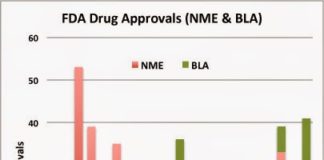Rich Meyer, author the World of DTC Marketing blog, drew my attention to a recent Wall Street Journal article entitled “Am I Dreaming, or Is This a Sleeping-Pill Spot?“
Maybe the article should have been entitled, “Am I Dreaming, or Is This a Rozerem Ad?” because it sure isn’t jouranlism worthy of the WSJ.
The article is all about the Rozerem Lincoln and Beaver ad campaign, which I have been criticising in this blog for months (see, for example, “Rozerem Ads Dis Lincoln, Show Beaver“).
The article serves mainly as a vehicle for the Takeda product team and its ad agency to give themselves credit for a job well-done despite what some Madison Avenue executive critics — not to mention us bloggers! — have to say, such as:
“I had to watch it a few times to really get it,” says Terry Gallo, president of Euro RSCG Life Adrenaline, a Havas-owned health-care marketing agency. Takeda has to make sure that a consumer doesn’t get “so wrapped up in the story” that he doesn’t pay attention to the product and the qualities that make it distinctive, she says.
Hmmm…where have I heard that before? Oh, Yes! Right here on Pharma Marketing Blog and on World of DTC Marketing Blog.
Yet the main theme of the WSJ article is that the ad “breaks from convention” and despite that or because of it, “the ad is working.” Kukdos to Chris Benecchi, Takeda’s senior product manager for neuroscience marketing and to the ad agency, Cramer-Krasselt.
But is the ad really working?
The WSJ reports that “Rozerem’s monthly sales have increased to $10.5 million in October from $6.31 million in July, when the ad went on the air.” Excuse me while I whip out my calculator.
$4.2 million increase per month for 3 months post-ad not counting July (a generous estimate) equals $12.6 million additional sales attributable to the ad (if only it were that simple; what about promotion to physicians?).
Balance that gain against the ad spend for Rozerem. Let’s say that’s $25 million (Lunesta spends about $140 million per year on DTC). Spending $25 million to make $12.6 million — that’s a negative ROI, which I pointed out in a previous post (see “Rozerem Ads Innovatively Ineffectual“).
Rich Meyer documents the failure of the Rozerem campaign by looking at product web site statistics. See “Ambien CR.com the clear winner in the sleep wars on the Web.”
If only the WSJ reporter had done a bit more research, he would have learned all this and not allowed Takeda’s PR agency to use the WSJ for damage control. He only had to do a Google search on “rozerem ad” and he would have found my posts to Pharma Marketing Blog occupying 8 of the top 10 natural search results (including #1).
BTW, you will also find a YouTube listing with link to a video of the ad (shown here).
This video was submitted to YouTube on October 17, 2006 by “lewisusauk,” who said “New Rozerem Ad Campaign. Possibly the best prescription drug ad since the FDA relaxed the rules on drug advertising.” lewisusauk is obviously a “sock puppet” playing the “social networking” game and trying to offset all the genuine negative buzz out there.
“A sock puppet, for those still boning up, is a false identity through which a member of an Internet community speaks while pretending not to, like a puppeteer manipulating a hand puppet. Recently, a senior editor at The New Republic got in trouble for some particularly colorful sock puppetry.” See “Sock Puppet:NAILED“.
But I digress. Back to the WSJ article, which appears to be part and parcel of the Rozerem buzz campaign itself!
I expected a more well-defined line between journalism and advertising/PR shill, especially from the WSJ. When the emperor has no clothes, it’s up to reporters to point this out! I guess they are conceding that role to us bloggers!









![6 Digital Tools at the Center of Healthcare Digitalization [INFOGRAPHIC]](http://ec2-54-175-84-28.compute-1.amazonaws.com/pharma-mkting.com/wp-content/uploads/2021/04/6DigitalTools_600px-100x70.jpg)




